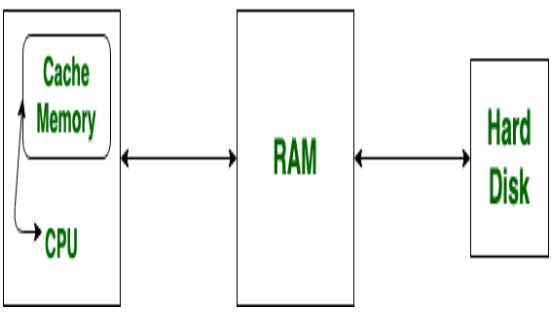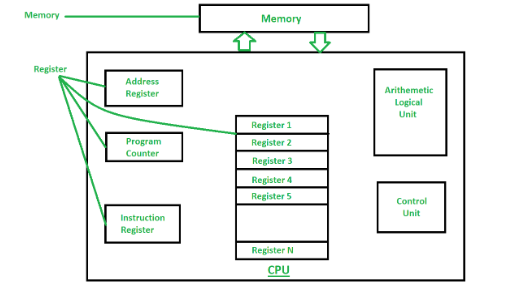Difference between Cache Memory and Register
Last Updated :
17 Aug, 2022
1. Cache Memory: The cache is a smaller and fast memory component in the computer which is inserted between the CPU and the main memory. To make this arrangement effective. The cache needs to be much faster than the main memory. This approach is more economical than the use of fast memory devices to implement the entire main memory.

2. Register: Register is the smallest holding data element that is built into the processor itself. These are memory locations that can be directly accessible by the processor. It holds a small amount of data around 32-bits to 64-bits and may hold an instruction, a storage address, or any kind of data such as a bit sequence or individual characters.
For example Accumulator register, Program counter, Instruction register, Address register, etc.

Difference between Cache Memory and Register:
| CACHE MEMORY |
REGISTER |
| The cache is a smaller and a fast memory component in the computer. |
Registers is a small amount of fast storage element into the processor. It is faster than cache memory due to the smaller size and proximity with the CPU itself |
| Cache memory is exactly a memory unit. |
It is located on the CPU. |
| It is used during reading and writing processes from the disk. |
It is used to store and retrieve information from them. |
| It is a high-speed storage area for temporary storage. |
It is used to store data temporarily for processing and transfer. |
| It copied the recently used data into. |
It holds operands or instruction that CPU is currently processing. |
| It reduces the average memory access time. |
It reduces the time required to find the item stored in memory. |
CPU accesses memory at the faster rate than register.
|
CPU can operate on register contents at the rate of more than one operation in one clock cycle. |
| It costs less per byte than register. |
It costs more per byte than cache memory. |
| Dynamic Page Cache, Database Query Cache are example of cache. |
Loop counters is example of register. |
|
Types-
- L1 (Level 1) cache
- L2 (Level 2) cache
- L3 (Level 3) cache
|
Commonly used types of registers-
- AC (Accumulator)
- AR (Address Register)
- DR (Data Register)
- IR (Index Registers)
- PC (Program Counter)
- MDR ( Memory Data Register)
- MBR ( Memory Buffer Register) and more.
|
Share your thoughts in the comments
Please Login to comment...